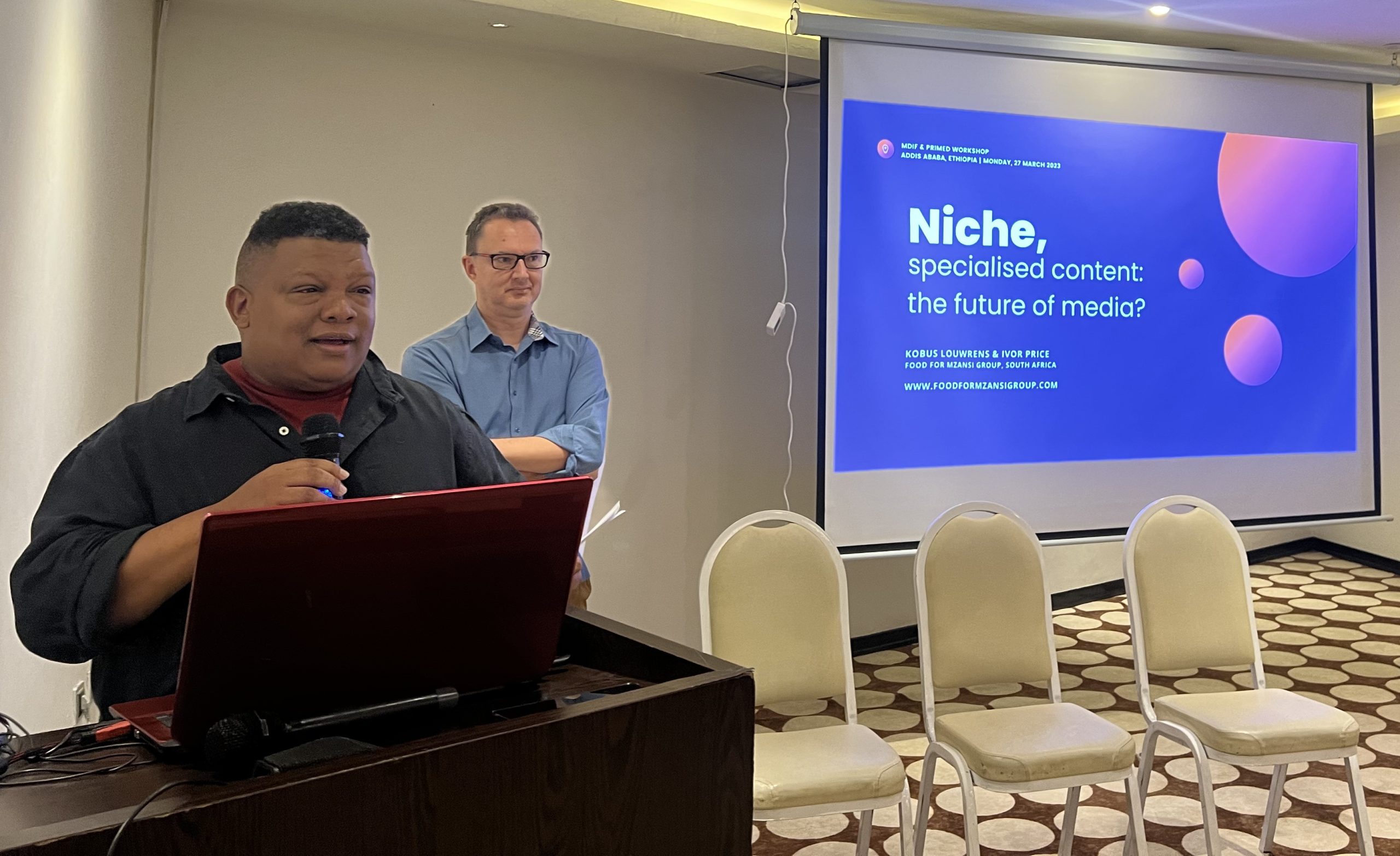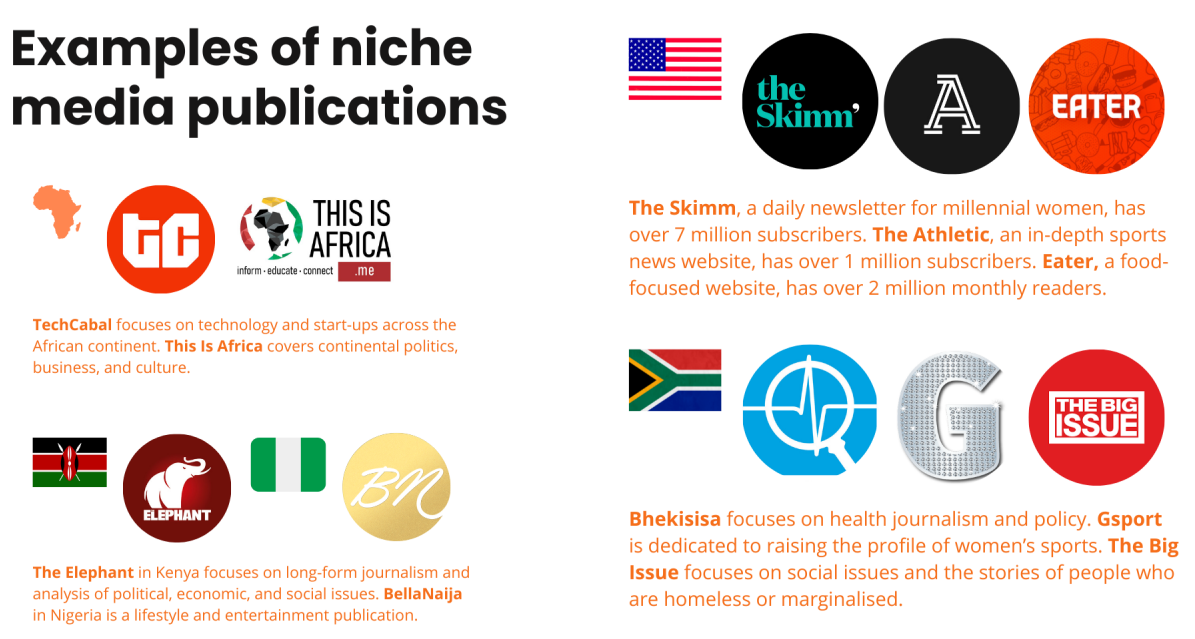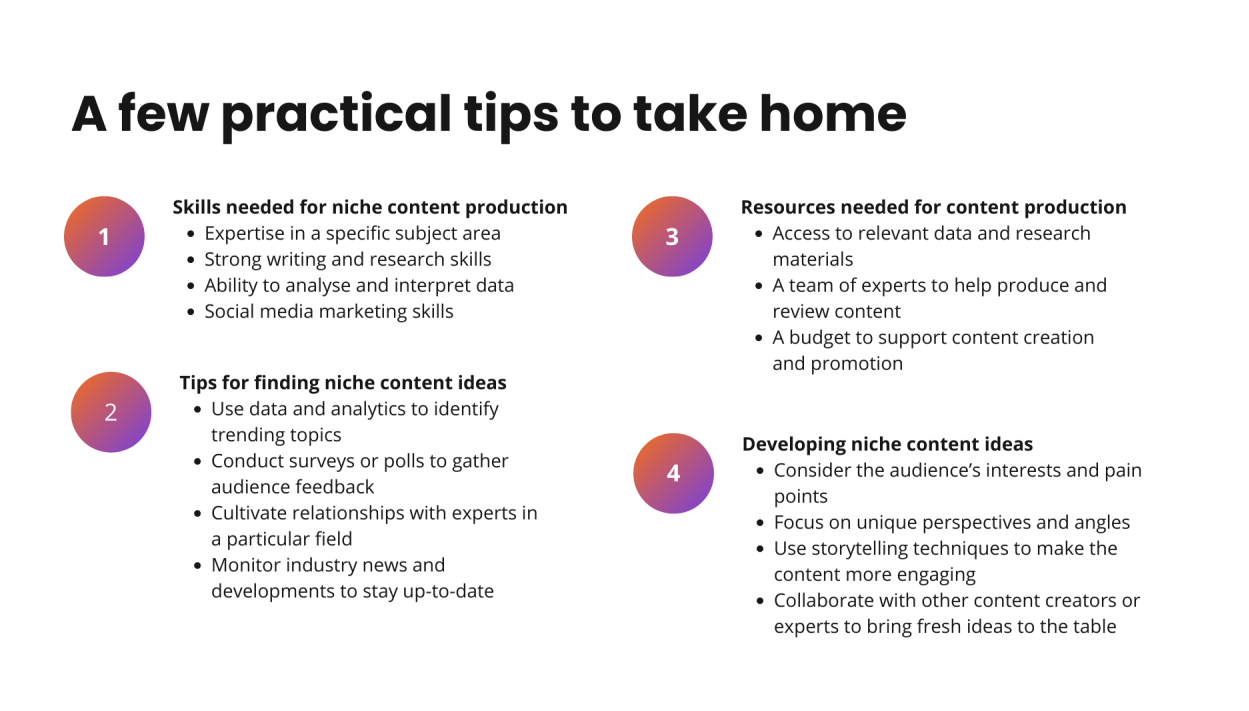According to a 2019 Reuters Institute Digital News report, niche publications are growing twice as fast as their more general counterparts, with audiences increasingly seeking out specialised content to suit their needs and interests. There are clear advantages to niche publishing, with loyal and engaged audiences leading to higher engagement – and advertisers willing to pay a premium to reach a highly targeted audience.
The South African founders of the Food for Mzansi Group, Kobus Louwrens and Ivor Price, shared their insights into the potential of niche publishing at the PRIMED Building Viable Media Businesses workshop in Addis Ababa, Ethiopia.

“The general interest model is broken, the shift is to narrow, deep and engaged – it is all about understanding and serving communities rather than appealing to the masses.”
What drives the rise in niche publishing?
During their heyday legacy newspapers enjoyed a boom in supplements, offering content and advertising in specialist interest areas like motoring, lifestyle and women’s sections, but unfortunately this did not translate well into new digital formats. The proliferation of digital platforms has made it easier for consumers to find information and a community catering to even the most esoteric interest, shared with even just a hundred other people around the world.
This has opened up opportunities for niche publications to emerge focusing on a very specific topic, interest area, audience segmentation, geographic or demographic niche – the trick is to identify the gap in the market and create content that speaks to that niche.
The benefits of niche-ing
Focusing on a niche can help you clarify your value proposition, stay on target and have a clear audience to write for. It can also help your audience find you, and makes it clear what to focus your energy and resources on and what not to.
According to the Food for Mzansi duo building an engaged community of readers that trusts the brand allows you to capitalise on the loyalty and engagement of your audience. Niche publications can monetise through sponsorships, affiliate marketing, direct support, advertising, podcasts, newsletters and membership – first party data and database building is the key to monetising your audience.
As an agriculture-focused digital publication Food for Mzansi has been able to provide focused coverage of topics of interest to farmers and agripreneurs and grow a loyal readership. Last year the group saw a massive growth in eventing and by end of year expect that it could become the biggest opportunity for monetising the audience they have built over several years.
As the media landscape evolves over 60% of marketers now believe that niche targeting is essential to their overall marketing strategy. If your audience represents a sector marketers are looking to target, and you can show high engagement, this could be a safer bet for their budget and return more qualified leads.
The trend will likely be driven even more by the death of the third-party cookie, as you are not broadcasting and seeing who comes to your product, but decide who to market to and go find those people.

How do you go about spotting a possible niche in your market?
The Food for Mzansi team developed a matrix for publishers to evaluate the potential of niche products, considering four aspects:
- Social imperative – is there a social imperative for introducing a new title or product servicing and audience? If so, there are likely already resources and funding devoting to solving this need you could potentially access
- Audience – what is the potential size of the audience and can you describe it to a very granular level. What other services are already out there that serve this need?
- Commercial viability – do you have an idea of the potential ad spend? Is there potential to gather members of this audience for physical events? Can you estimate the spending power of this audience? How regulated is the industry?
- Competition – how many other publishers or information products are already serving this target audience? How would your approach differ?
In conducting your market research, reliable numbers are often difficult to come by and while you should try not to work too much off your own assumptions, Louwrens warned that you also shouldn’t simply trust what insiders tell you, as often the niche is invisible from the inside, and it sometimes takes outsiders with naïve eyes to spot the gap.

